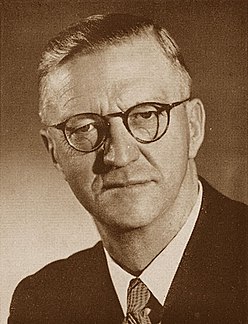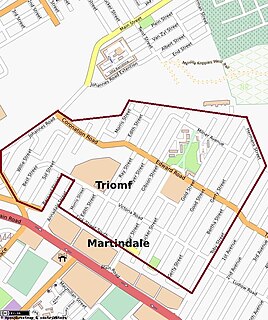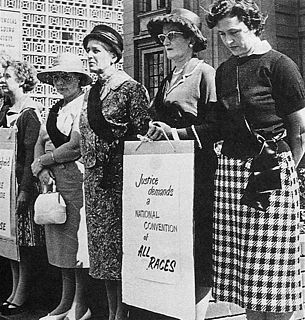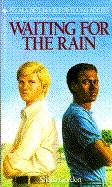
Soweto is a township of the City of Johannesburg Metropolitan Municipality in Gauteng, South Africa, bordering the city's mining belt in the south. Its name is an English syllabic abbreviation for South Western Townships. Formerly a separate municipality, it is now incorporated in the City of Johannesburg Metropolitan Municipality, Suburbs of Johannesburg.

Nadine Gordimer was a South African writer, political activist and recipient of the 1991 Nobel Prize in Literature. She was recognized as a writer "who through her magnificent epic writing has – in the words of Alfred Nobel – been of very great benefit to humanity".

Govan Archibald Mvuyelwa Mbeki was a South African politician, Communist and son of Chief Sikelewu Mbeki and Johanna Mahala and also the father of the former South African president Thabo Mbeki and political economist Moeletsi Mbeki. He was a leader of the South African Communist Party and the African National Congress. After the Rivonia Trial, he was imprisoned (1963–1987) on charges of terrorism and treason, together with Nelson Mandela, Walter Sisulu, Raymond Mhlaba, Ahmed Kathrada and other eminent ANC leaders, for their role in the ANC's armed wing, Umkhonto we Sizwe (MK). He was sometimes mentioned by his nickname "Oom Gov".

Charles Robberts Swart, nicknamed Blackie was a South African politician who served as the last Governor-General of the Union of South Africa from 1959 to 1961 and the first State President of the Republic of South Africa from 1961 to 1967.
Mark Mathabane is a South African author, lecturer, and a former collegiate tennis player and college professor.

Christiaan Frederick Beyers Naudé was a South African cleric, theologian and the leading Afrikaner anti-apartheid activist. He was known simply as Beyers Naudé, or more colloquially, Oom Bey.

Sophiatown, also known as Sof'town or Kofifi, is a suburb of Johannesburg, South Africa. Sophiatown was a legendary black cultural hub that was destroyed under apartheid, rebuilt under the name of Triomf, and in 2006 officially returned to its original name. Sophiatown was one of the oldest black areas in Johannesburg and its destruction represents some of the excesses of South Africa under apartheid. It produced some of South Africa's most famous writers, musicians, politicians and artists.

Nokugcina Elsie Mhlophe, also known as Gcina Mhlophe, is a South African anti-apartheid activist, actress, storyteller, poet, playwright, director and author.

Apartheid was a system of institutionalised racial segregation that existed in South Africa and South West Africa from 1948 until the early 1990s. Apartheid was characterized by an authoritarian political culture based on baasskap, which ensured that South Africa was dominated politically, socially, and economically by the nation's minority white population. According to this system of social stratification, white citizens had the highest status, followed by Asians and Coloureds, then black Africans. The economic legacy and social effects of apartheid continue to the present day.

The Black Sash is a South African human rights organisation. It was founded in Johannesburg in 1955 as a non-violent resistance organisation for liberal white women.

The Soweto uprising was a series of demonstrations and protests led by black school children in South Africa that began on the morning of 16 June 1976.

The Story of an African Farm was South African author Olive Schreiner's first published novel. It was an immediate success and has become recognised as one of the first feminist novels.

The Smell of Apples is a 1993 debut novel by South African Mark Behr, published in Afrikaans as Die Reuk van Appels then published in 1995 in English.

The Conservationist is a 1974 novel by the South African writer Nadine Gordimer. The book was a joint winner of the Booker-McConnell Prize for fiction. It is described as more complex in design and technique than Gordimer's earlier novels.
Sandra Laing is a South African woman who was classified as Coloured by authorities during the apartheid era, due to her skin colour and hair texture, although she was the child of at least three generations of ancestors who had been regarded as white. At the age of 10, she was expelled from her all-white school, and the authorities' decisions based on her appearance disrupted her family and adult life.

Internal resistance to apartheid in South Africa originated from several independent sectors of South African society and took forms ranging from social movements and passive resistance to guerrilla warfare. Mass action against the ruling National Party (NP) government, coupled with South Africa's growing international isolation and economic sanctions, were instrumental in leading to negotiations to end apartheid, which began formally in 1990 and ended with South Africa's first multiracial elections under a universal franchise in 1994.

The Story of an African Farm, released in the United States as Bustin' Bonaparte: The Story of an African Farm, is a 2004 South African film directed by David Lister and based on the 1883 novel of the same name by South African author Olive Schreiner.

Skin is a British-South African 2008 biographical film about Sandra Laing, a South African woman born to white parents, who was classified as "Coloured" during the apartheid era, presumably due to a genetic case of atavism. Directed by Anthony Fabian and Based on the book When She Was White: The True Story of a Family Divided by Race by Judith Stone, Skin premiered at the Toronto International Film Festival on 7 September 2009.

Rumours of Rain is a South African novel by André Brink, published in 1978. It was shortlisted for the Booker Prize. It is set on a South African farm during apartheid.
Eric Miller is a professional photographer based in South Africa. Miller was born in Cape Town but spent his childhood in Johannesburg. After studying psychology and working in the corporate world for several years, Miller was driven by the injustices of apartheid to use his hobby, photography, to document opposition to apartheid by becoming a full-time photographer.

















